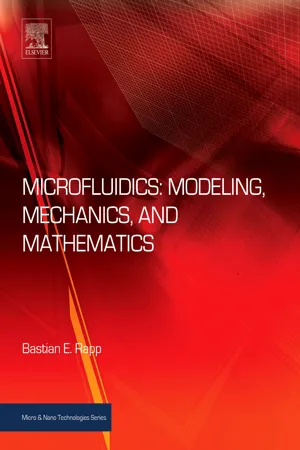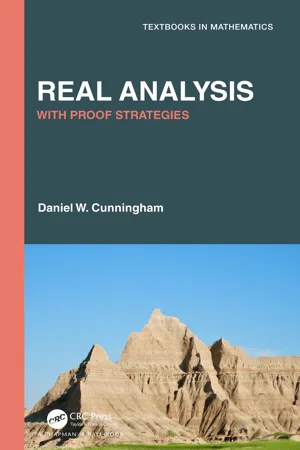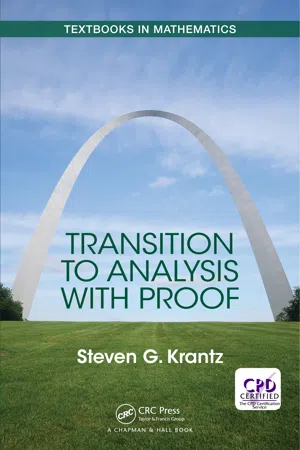Mathematics
Taylor Series
A Taylor series is a way to represent a function as an infinite sum of terms that are calculated from the function's derivatives at a single point. It provides a method for approximating a wide variety of functions using polynomials, making it a powerful tool in calculus and mathematical analysis. The series is named after the mathematician Brook Taylor, who introduced the concept in the 18th century.
Written by Perlego with AI-assistance
Related key terms
Related key terms
1 of 4
Related key terms
1 of 3
3 Key excerpts on "Taylor Series"
- Bastian E. Rapp(Author)
- 2016(Publication Date)
- Elsevier(Publisher)
Tab. 4.1 ) and can be conveniently evaluated using the zeta function.Fig. 4.1 The Riemann zeta function ζ (s).4.2 Taylor Series
4.2.1 Introduction
A Taylor 1 series or a Taylor Series expansion is an approximation of an analytical function using an infinite sum of terms, i.e. , a polynomial. The idea that a function can be expressed as a sum of terms was suggested before, but Taylor was the first to introduce a general method for calculating these terms.Taylor Series are very important tools in many areas of practical mathematics. In many applications, it is impossible to find a closed analytical expression of a function. In such scenarios, it may sometimes be significantly easier to approximate the function by a given number of terms, i.e. , a polynomial. Obviously, if we are talking about an infinite sum, there would be an infinite number of terms in this polynomial one needs to take into account. However, in many scenarios, it is acceptable to consider only a finite number of terms and thus approximate the function taking into account that the result may be incorrect to a small degree. Obviously, the higher the number of terms considered, the smaller the error.A Taylor Series is, so to speak, the link between analytical and numerical calculus. Whenever numerical approximations of problems such as solutions to PDEs are to be found, we very often have no other choice but to default to numerical approximations of the solution because finding the exact analytical solution is not possible.A number of prerequisites must be fulfilled in order to be able to work with a Taylor Series. As this book does not intend to give a fully accounted introduction to Taylor Series, we will restrict ourselves to a few easy-to-understand requirements. First of all, a Taylor Series is always constructed at a given point of the function. We usually say that the Taylor Series is “created around” or “expanded around” a given value a . If we move away from the point a , the Taylor Series will give a less ideal approximation of the function. Therefore, in order to construct a function in a given domain, we may need to create many series at different points a 1 , a 2 , a 3 , and so on in order to obtain a good approximation. As we will see, the Taylor Series expansion uses the derivatives of the function. Obviously one could argue, if we do not know the function, chances are we do not know anything about the derivatives. This is often not true. Many problems in practical physics and mathematics are described by (partial) differential equations. In these cases, we may know nothing of a function itself, i.e.- eBook - ePub
Real Analysis
With Proof Strategies
- Daniel W. Cunningham(Author)
- 2021(Publication Date)
- Chapman and Hall/CRC(Publisher)
Now find the sum of ∑ k = 1 ∞ k (x − 3) k − 1 2 k and the sum of ∑ k = 0 ∞ (x − 3) k + 1 (k + 1) 2 k. 8.4 Taylor Series In the previous section, we started with a power series centered at a point c with a radius of convergence ρ > 0. We then used this power series to define a function f and show that it is infinitely differentiable at all the points in an interval determined by c and ρ. In this section, we will attempt to reverse this process; that is, we will start with a function that is infinitely differentiable on an open interval and try to find a power series that is equal to the function on this interval. Definition 8.4.1. Let f be a function that is defined on an open interval I that contains c ∈ I. Suppose that ∑ k = 0 ∞ a k (x − c) k is a power series that converges for all x ∈ I. If f (x) = ∑ k = 0 ∞ a k (x − c) k for all x ∈ I, then we say that f is represented by the power series ∑ k = 0 ∞ a k (x − c) k. We also say that f has a power series representation. Let f be a function that is infinitely differentiable at a point c. We would like to find a power series ∑ k = 0 ∞ a k (x − c) k such that f (x) = ∑ k = 0 ∞ a k (x − c) k for all x in some open interval I containing c. How can one find such a power series? If f (x) = ∑ k = 0 ∞ a k (x − c) k for all x in I, then Theorem 8.3.6 implies that f (k) (c) = k ! a k and thus, a k = f (k) (c) k ! for all k ≥ 0. Hence, we have found the only candidate; that is, if f has a power series representation, then this power series must be ∑ k = 0 ∞ f (k) (c) k ! (x − c) k. Definition 8.4.2. Let f be a function that is infinitely differentiable on an open interval I containing c. The Taylor Series for f centered at c is ∑ k = 0 ∞ f (k) (c) k ! (x − c) k = f (c) + f ′ (c) 1 ! (x − c) + f ′ ′ (c) 2 ! (x − c) 2 + f (3) (c) 3 ! (x − c) 3 + ⋯, where the coefficients are called. the Taylor coefficients - eBook - ePub
- Steven Krantz(Author)
- 2017(Publication Date)
- Chapman and Hall/CRC(Publisher)
Chapter 13 Elementary Transcendental Functions 13.1 Power Series Preliminary Remarks When we learn about power series, and especially Taylor’s formula, in calculus class we generally come away with the impression that most any function can be expanded in a power series. Unfortunately this is not the case. Functions that have convergent power series expansions are called real analytic functions, and have many special properties. We shall learn about them in the present section. A series of the form ∑ j = 0 ∞ a j (x - c) j is called a power series expanded about the point c. Our first task is to determine the nature of the set on which a power series converges. Proposition 13.1 Assume that the power series ∑ j = 0 ∞ a j (x - c) j converges at the value x = d with d ≠ c. Let r = | d - c |. Then the series converges uniformly and absolutely on compact subsets of I = { x : | x - c | < r }. Proof : We may take the compact subset of I to be K = [ c - s, c + s ] for some number0 < s < r. For x ∊ K it then holds that ∑ j = 0 ∞ | a j (x - c) j | = ∑ j = 0 ∞ | a j (d - c) j | · | x - c d - c | j In the sum on the right, the first expression in absolute values is bounded by some constant C (by the convergence hypothesis). The quotient in absolute values is majorized by L = s / r < 1. The series on the right is thus dominated by ∑ j = 0 ∞ C · L j. This geometric series converges. By the Weierstrass M -Test, the original series converges absolutely and uniformly on K. □ An immediate consequence of the proposition is that the set on which the power series ∑ j = 0 ∞ a j (x - c) j converges is an interval centered about c. We call this set the interval of convergence. The series will converge absolutely and uniformly on compact subsets of the interval of convergence. The radius of the interval of convergence (called the radius of convergence) is defined to be half the length of the interval of convergence
Index pages curate the most relevant extracts from our library of academic textbooks. They’ve been created using an in-house natural language model (NLM), each adding context and meaning to key research topics.
Explore more topic indexes
Explore more topic indexes
1 of 6
Explore more topic indexes
1 of 4


